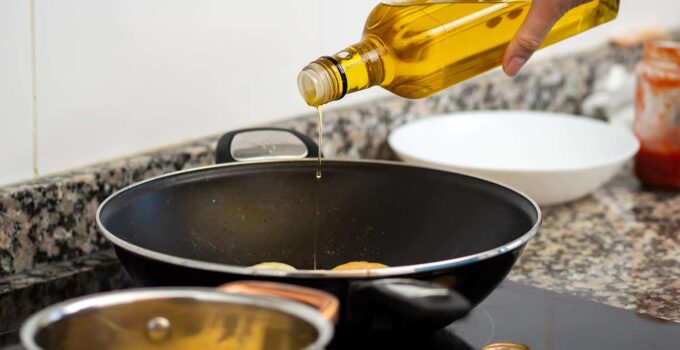Whether you’re thinking about purchasing a deep fryer for your home or the restaurant you’re running, one of the most important things for you to remember is that the oil you choose to use will incredibly impact how the food looks and tastes. Because of this, it’s crucial that you opt for the right deep fryer oil.
However, if you did some research online, you might have discovered that there is a wide range of oil types that you can opt for using, which is why you might be completely confused and overwhelmed. Luckily, our article can help you learn which oils are appropriate for deep frying, so, without further ado, here is what you need to:
What Options Can I Choose From?
Before we take a look at some of the finest products that you could opt for, it’s worth mentioning that deep drying oils need to maintain high smoking points. What does this mean? Well, it means that it must be able to sustain high temperatures without burning quickly and it also needs to have a neutral flavor. Based on these specific things, some of the best oil options that you can choose to purchase are the following:
1. For Several Purposes: Vegetable Oil
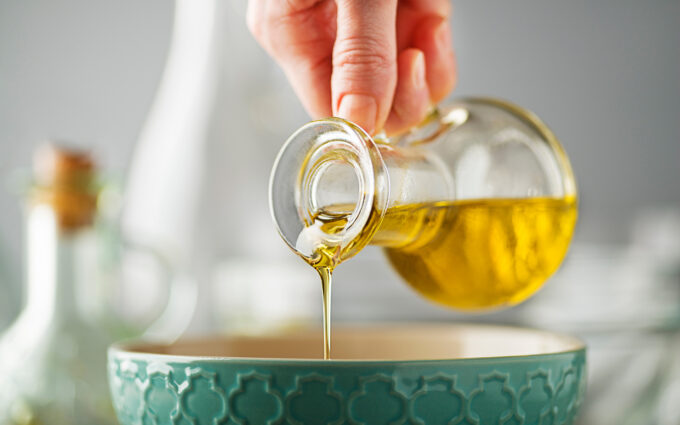
Source: blogchef.net
The first option is a multipurpose one, which means that you could decide to utilize it for all methods of frying, as well as all components including french fries, chicken, and so on. It’s incredibly resistant to high temperatures from 350F to 450F – meaning that you won’t have to worry about it burning quickly. Also, it has a neutral flavor, which means that it won’t change the flavor of the meals you’re preparing, instead, it’ll only make it better.
2. For Deep Frying: Peanut Oil
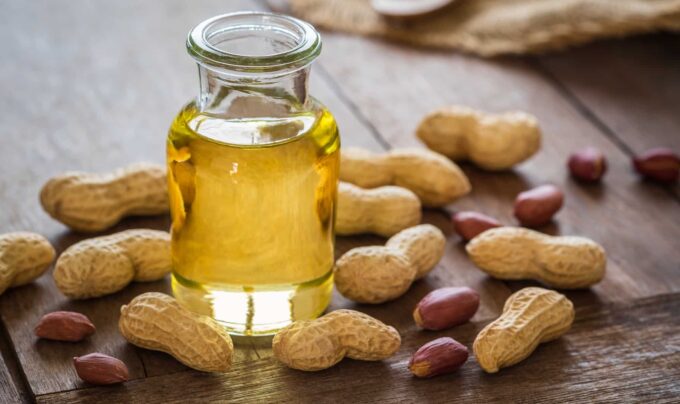
Source: spiceography.com
Now, you should know that peanut oil is quite similar to the aforementioned alternative, mostly because it could be utilized for a wide range of cooking methods without burning at elevated temperatures. However, this option is incredibly popular when it comes to deep-frying, mostly you could combine it with other oils. What does this mean? Well, for instance, if you’re preparing something that requires you to use vegetable oil, you could use peanut oil as a substitute – something that’ll be healthier and that’ll make the meals taste better.
3. For All-Purpose Frying: Corn Oil
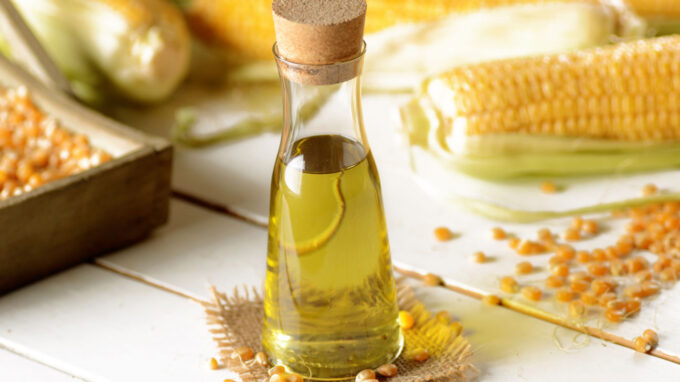
Source: healthline.com
If a high smoke point is what you’re looking for, a high smoke point is what you’ll receive if you choose to use corn oil. Not only is this type appropriate for deep frying ingredients, but it’s also appropriate for shallow-frying, which means that you can pour it in a skillet as well. Also, it won’t change the flavor of the meal you’re preparing like some other types would – for instance, olive oil – hence, no matter what you’re preparing, the taste will be perfect.
4. For Pan Frying: Olive Oil
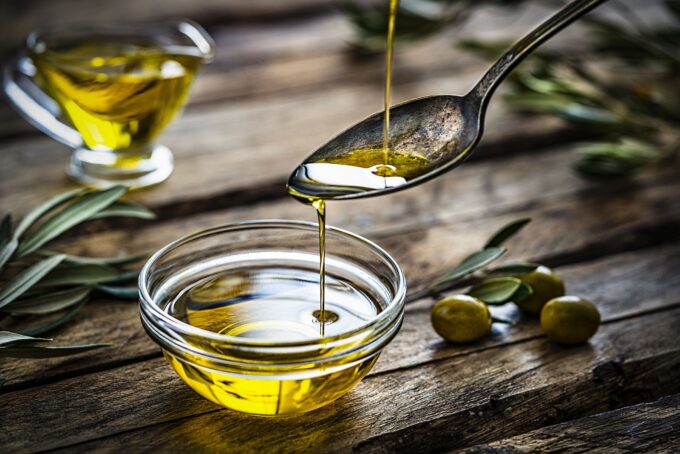
Source: italian-traditions.com
Almost all of us have a bottle of this oil in our kitchens and if you want to prepare a meal that requires shallow or deep pan frying, you could opt for utilizing it. Now, keep in mind, it has a lower smoke point (around 350F) than some other types we’ve mentioned in this list, so you might want to be extra careful when using it. Also, it doesn’t have a neutral taste, thus, it’ll definitely add flavor to the dishes you’re preparing.
5. For All-Purpose Deep Frying: Canola Oil
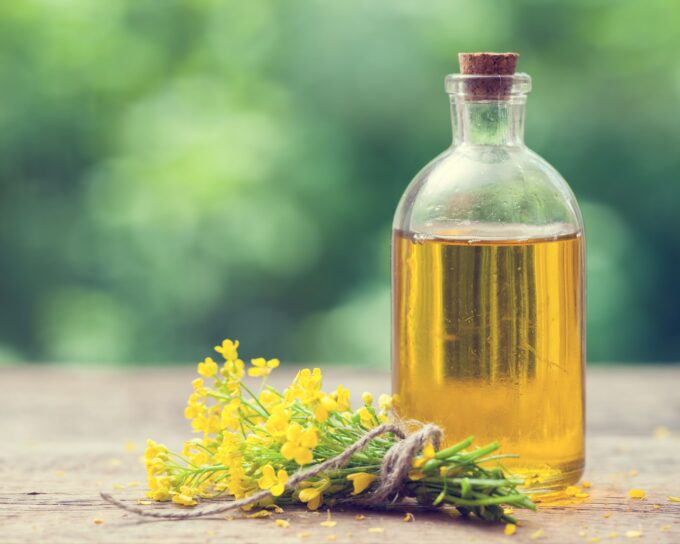
Source: verywellfit.com
Of all the options we’ve mentioned in this article, canola oil has to be one of the most versatile ones that you could purchase. Why? Well, besides it being completely neutral-flavored, it’s also suitable for every single type of frying out there, however, you could use it for making salad dressings as well. According to the experts from www.grillen-kochen-backen.de, it won’t burn at extremely high temperatures (over 450F), which, of course, makes it one of the best options for deep frying.
6. For Sauteing: Coconut Oil
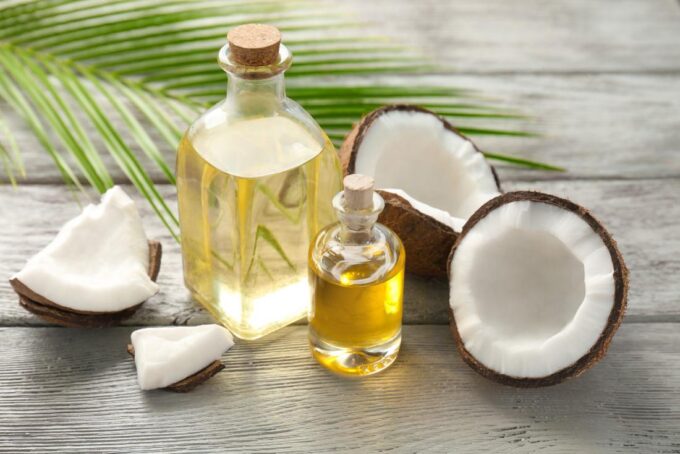
Source: darshnaturals.com
Last on our list, but definitely worth mentioning is coconut oil, an option that is perfect for sauteing veggies and other ingredients, as well as pan-frying. Now, the smoke point ranges from 300F to 400F, which means that you may need to be extra careful with it if you’re planning on utilizing it for deep frying, mostly because you’ll want to ensure that it doesn’t burn. Also, there are some flavored options out there, so, be careful when browsing through your options.
What to Consider Before Choosing?
Before we conclude this article, there are a few things worth mentioning, all of which will help you opt for deep-frying oil. After all, you’ll want to ensure that it doesn’t change the taste of the components and meals you’re preparing and you’ll definitely not want it to fume or create a lot of smoke, hence, when browsing for some of the options we’ve mentioned above, you should focus on the following things:
- The Smoke Point – throughout this article, we’ve mentioned the importance of the smoking point of oils, nonetheless, you should know that it’s the most important thing that you must ensure. Deep fryers are capable of eating oil to 350F and more, and as it increases, the oil could end up burning, thus, releasing toxic substances and smoke. Hence, always look for an option that has a high smoking point!
- The Taste – if you’re, for example, preparing Chili Con Carne, you wouldn’t want it to taste like coconuts, right? Because of this, you should look into options that have a neutral flavor, and by doing so, you can make sure that your food remains delicious. Of course, if needed, you can opt for something that has a taste, but this will only be suitable if you’re preparing a meal that requires you to use oil that has a flavor.
- The Deep Fryer That You Have – lastly, you should also ensure that you can actually use specific oils in the deep fryer you have or that you’re planning on purchasing. After all, they operate at extremely high temperatures, hence, if you end up choosing and using something that isn’t suitable, you could end up damaging the appliance. So, you could do some digging or read the instruction manual to see what you could opt for using.
Conclusion
Although most people don’t realize it, there is a wide range of oil types that they could use for deep frying. Keep in mind, each of the options we’ve mentioned above has different characteristics, thus, before choosing, you should make sure that you opt for something that is suitable for the recipes you’ll be preparing.

